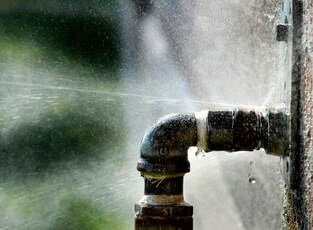We've found this post on Locating water leaks below on the web and decided it made sense to discuss it with you here.

Early discovery of leaking water lines can reduce a potential calamity. Some small water leakages might not be noticeable.
1. Take A Look At the Water Meter
Every house has a water meter. Examining it is a surefire manner in which aids you discover leaks. For starters, switch off all the water resources. Guarantee nobody will flush, make use of the faucet, shower, run the cleaning machine or dish washer. From there, go to the meter and watch if it will certainly change. Considering that nobody is utilizing it, there should be no movements. If it relocates, that indicates a fast-moving leak. If you find no adjustments, wait an hour or 2 and examine back once again. This implies you might have a slow leak that might also be below ground.
2. Check Water Consumption
If you find sudden adjustments, regardless of your intake being the exact same, it indicates that you have leaks in your plumbing system. An unexpected spike in your bill suggests a fast-moving leakage.
At the same time, a consistent boost every month, despite the very same behaviors, shows you have a sluggish leak that's likewise slowly rising. Call a plumber to thoroughly examine your residential or commercial property, specifically if you really feel a warm location on your flooring with piping beneath.
3. Do a Food Coloring Test
30% comes from bathrooms when it comes to water intake. Examination to see if they are running effectively. Drop specks of food shade in the storage tank and wait 10 minutes. If the shade somehow infiltrates your bowl throughout that time without flushing, there's a leak between the storage tank as well as bowl.
4. Asses Outside Lines
Do not neglect to inspect your outdoor water lines too. Should water leak out of the connection, you have a loosened rubber gasket. One small leakage can waste bunches of water as well as spike your water bill.
5. Examine the situation and also evaluate
Home owners should make it a practice to check under the sink counters and also even inside closets for any bad odor or mold and mildew growth. These two warnings suggest a leakage so punctual attention is called for. Doing regular assessments, also bi-annually, can save you from a significant issue.
Check for discolorations and also compromising as many pipelines and home appliances have a life expectancy. If you presume dripping water lines in your plumbing system, do not wait for it to rise.
Early detection of leaking water lines can reduce a possible calamity. Some tiny water leakages might not be visible. Checking it is a guaranteed method that assists you uncover leakages. One little leak can throw away heaps of water as well as spike your water costs.
If you think leaking water lines in your plumbing system, don't wait for it to intensify.
WARNING SIGNS OF WATER LEAKAGE BEHIND THE WALL
PERSISTENT MUSTY ODORS
As water slowly drips from a leaky pipe inside the wall, flooring and sheetrock stay damp and develop an odor similar to wet cardboard. It generates a musty smell that can help you find hidden leaks.
MOLD IN UNUSUAL AREAS
Mold usually grows in wet areas like kitchens, baths and laundry rooms. If you spot the stuff on walls or baseboards in other rooms of the house, it’s a good indicator of undetected water leaks.
STAINS THAT GROW
When mold thrives around a leaky pipe, it sometimes takes hold on the inside surface of the affected wall. A growing stain on otherwise clean sheetrock is often your sign of a hidden plumbing problem.
PEELING OR BUBBLING WALLPAPER / PAINT
This clue is easy to miss in rooms that don’t get much use. When you see wallpaper separating along seams or paint bubbling or flaking off the wall, blame sheetrock that stays wet because of an undetected leak.
BUCKLED CEILINGS AND STAINED FLOORS
If ceilings or floors in bathrooms, kitchens or laundry areas develop structural problems, don’t rule out constant damp inside the walls. Wet sheetrock can affect adjacent framing, flooring and ceilings.
https://www.servicemasterbyzaba.com/blog/how-to-detect-water-leakage-in-walls/

Do you really like reading up on Top leak detection hacks? Try leaving a remark down the page. We will be pleased to know your thinking about this post. In hopes to see you back again later on. You should take the opportunity to promote this blog post if you enjoyed it. Thanks a bunch for your time. Don't hesitate to stop by our blog back soon.
 Tia Carrere Then & Now!
Tia Carrere Then & Now! Ben Savage Then & Now!
Ben Savage Then & Now! Jenna Jameson Then & Now!
Jenna Jameson Then & Now! Catherine Bach Then & Now!
Catherine Bach Then & Now! Erika Eleniak Then & Now!
Erika Eleniak Then & Now!